When you’re in the preliminary stages of building a new website or re-building an existing site, one step that often doesn’t get the attention it deserves is the site structure. When I say “site structure”, I’m referring to the categorization of your site, and the naming structure of those categories.
Oftentimes, there is more focus on the design itself rather than the structure of the pages. While the aesthetics of the site are very important, this would be like furnishing a house and choosing your wallpaper before deciding how many rooms you were going to have built.
You’ll want to set up a solid foundation for your categories and site structure so you can deliver the best user experience, as well as raise your SEO (search engine optimization) potential. By creating proper theming & keywords, and choosing the correct categories from the start, your ability to rank in the search engines will become that much easier.
3 Ways Site Structure Affects SEO
Having the proper balance between SEO and user experience can increase your organic traffic potential greatly and is more or less the first step in having any SEO success at all.
User Experience
This one is obvious. You want your site’s architecture to make sense to your visitors so that they can find what they’re looking for as quickly as possible. Also, poor usability can send the users back to the search engines to look for something else. This sends a bad signal to the search engines and can hurt your organic keyword rankings. On the flip side, sites that are easier to navigate will tend to rank better.
I won’t be going into much detail about user experience, but just keep in mind that it is in fact a ranking factor, and site structure affects user experience. For further reading, here’s a good article on structuring your site for optimal user experience.
Theming & Keywords
Your site structure will affect the theming or subject matter of your pages, which can affect your overall SEO. Getting organic traffic to your page involves more than just the keywords on that page. It’s also about the theme or subject of the pages surrounding that page, and the theme of your domain as a whole.
The theme of your pages or categories are made of the keywords being used. Choosing the right keywords can greatly benefit your site’s performance.
Distribution of Link Power
Google tends to rank pages higher that have more links pointing in. And since the highest tier categories on your site typically get the most links pointing in (from your own site as well as other external websites), these categories will be given priority over their sub-categories. These highest tier categories will have the most link power or “link equity”. The distribution of link equity affects the SEO of your pages.
SEO Considerations for Your Site Structure
Here is a look at a very general site structure…
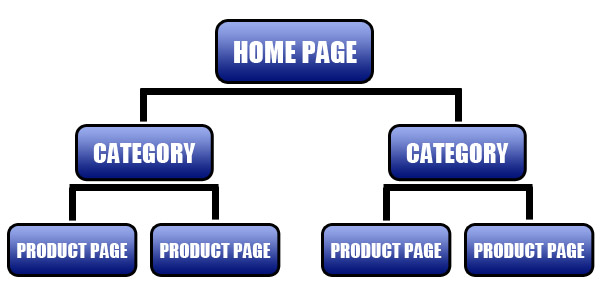
SEO Site Structure
Are You SURE You’re Using the Right Keywords?
It’s important to not be overly presumptuous when naming your categories. You’ll want to take some time to figure out if you’ll be using the keywords that will bring in the highest amount of organic traffic possible.
The first step in determining the terms for your categories is keyword research. Here are the 3 things I look for…
Search Volume
The higher the search volume, the more potential traffic that is available to you. However, if the search volume is too high, then it could be too competitive to use.
Competitiveness
Look at keyword phrases that are actually attainable. Typically, the longer the keyword phrase, the less competitive it will be. You might not be able to compete with something like “stamps”. You have a much better shot ranking highly in Google for something like “stamp collecting albums”.
Relevance
You want to pick keywords that closest represent your products or services. The more accurately you can describe what is on your web page or set of web pages, the easier it will be for you to rank.
Say we’re selling Baseball Memorabilia – Without doing any sort of preliminary keyword research, here is a simple site structure I might come up with for my products…
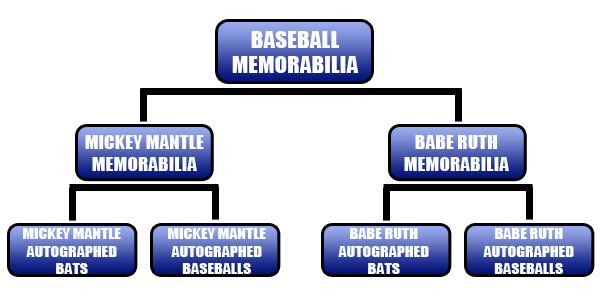
Baseball Memorabilia Initial Structure
Now, let’s see if our keyword research agrees with the above structure…
There are a lot of keyword research tools out there, but I recommend using Adwords Keyword Planner (formerly “Adwords Keyword Tool”) where you can not only see the data for keywords you input, but also get a set of other keyword ideas to use. This tool is free. I’ll show you how to use it below. First, you’ll need to signup for an account, if you don’t already have a login of course.
Using Adwords Keyword Planner
- Click “Search for keyword and adgroup ideas”
- Type in a few keywords you think are relevant to your products: “baseball memorabilia”, “autographed baseballs”, “autographed bats”, “signed baseballs”
- Click “Get Ideas”
- Select the “Keyword Ideas” tab
- Click on “Avg. Monthly Searches” so that it will show the highest searched keywords at the top
- Click on the Download button, it’s the arrow pointing down. Choose the Excel CSV and open it when it’s downloaded
So, now you’re looking at your Excel spreadsheet. Here you’ll see keywords related to your theme with the search volume and how competitive each is. The higher the number in the Competition column, the more competitive it is. Remember, you’re looking for high search volume, low competition keywords.
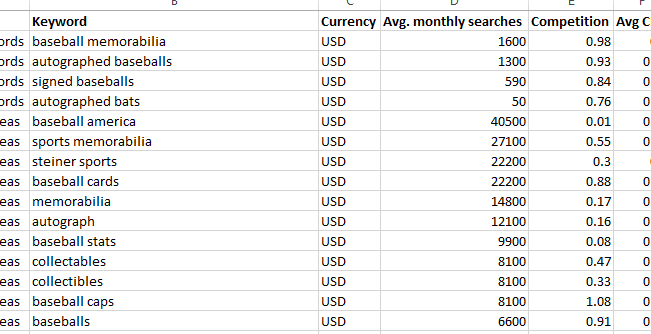
Keywords Spreadsheet
Our keyword research suggests that our original attempt at categorization might be less than optimal.
“mickey mantle memorabilia” – 140 monthly searches 0.96 competition
“mickey mantle autographed baseball” – 720 monthly searches 0.81 competition
Here are a couple that stick out to me that I might like to use instead…
“signed baseballs” – 590 monthly searches 0.84 competition
“mickey mantle signed baseball” – 1,000 monthly searches 0.90 competition
These keywords are excellent candidates as part of my site structure due to their higher search volume and fairly low competition. So when all is said and done I may end up with something like this. This has higher potential to rank and has great theming so that both the search engines and users can easily tell the subject matter for the sections of my site.
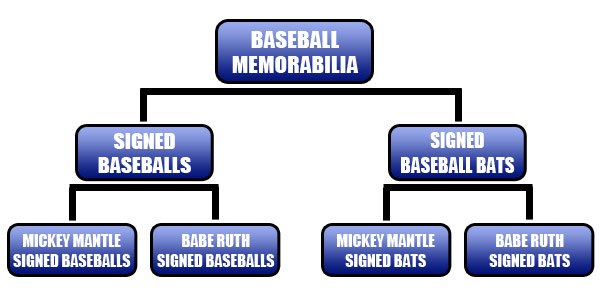
SEO Category Structure
So, to recap, categorize your site based on keyword phrases that will get you the most traffic. Those keyword phrases will be ones that are relevant to the products and content on that page, have high search volume, and low competition.
Consider the Distribution of Your Link Power
Like we talked about above, the more links pointing into page, the more ranking power or “link equity” (aka “link juice” or “PageRank”) — More on link equity and how links help SEO — A page has a certain amount of link equity and it will distribute it evenly to the pages that it links to. Here is a very simple illustration I created to show you the distribution of link equity.
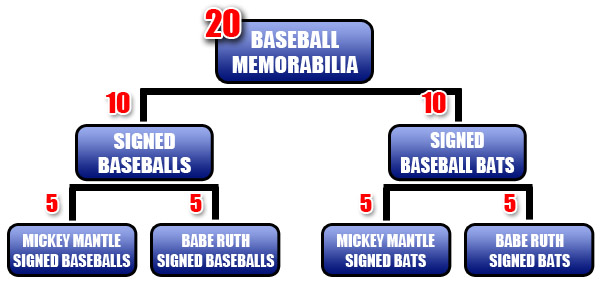
Distribution of Link Equity
So when you’re creating your site structure, keep in mind that the deeper pages tend to have less link equity thus lowering their ability to rank in the search engines.
Do’s and Don’ts of Internal Linking
A huge part of your overall site structure is your internal linking, which means simply how the pages of your domain connect/link to one another.
Here is a quick list of Do’s and Don’ts for internal linking structure that can affect your SEO and organic traffic potential.
DO’s
- Use text links: Especially important on your sitewide navigation, link to your categories with text links
- Use alt tags: If you MUST use images to link to your categories, then make sure you use the “alt” attribute on your images which contain keywords
- Use anchor text: Make sure the text of the hyperlink pointing in to your inner pages contains your keywords (but do not overdo this and don’t do this at the expense of user experience).
- Link horizontally: for instance, related products links on e-commerce product pages. This helps distribute link equity more evenly.
- Use absolute URLs: when linking internally, use the entire URL to point to a page. If your content ends up somewhere else online, it will still have your domain name.
- Add links in textual content: Add links to your product descriptions, articles, blogs, and other text-based content
- Vary your anchor text: The text of your hyperlinks should vary, especially when you frequently link to the same categories in your articles.
- Check Google Webmaster Tools: Check GWT frequently to make sure you don’t have linking errors
DON’TS
- Overuse anchor text: If the text of your hyperlinks pointing to categories look too “wordy” and unnatural, it may be too much – use your best judgment
- Use Too many links: Each page on your site should have no more than 100 links pointing away from said page
- Link via frames, JavaScript, Flash: Stick to linking via HTML, as it is more crawlable for the search engines
- Make pages too deep: Every page on your site should be 4 or less clicks away from the home page so it will get indexed
- Leave orphan or dead-end pages: Dead-end pages are pages that are part of your domain, but don’t link back in to your site. Orphaned pages are those that have no internal links at all pointing in
Clint Henderson
Latest posts by Clint Henderson (see all)
- How to Score Content Quality for Improved SEO Rankings (CQ Scoring) - September 8, 2017
- 2017 Mobile Marketing Statistics (Trends, Predictions, & Mobile Strategy) - April 1, 2017
- Ecommerce SEO for Product Pages (17-Step Guide) - January 27, 2017
Related Articles
 February 6, 2015 Google Algorithm Update: Is Google Punishing Sites with Poor Mobile User Experience?
February 6, 2015 Google Algorithm Update: Is Google Punishing Sites with Poor Mobile User Experience? April 1, 2017 2017 Mobile Marketing Statistics (Trends, Predictions, & Mobile Strategy)
April 1, 2017 2017 Mobile Marketing Statistics (Trends, Predictions, & Mobile Strategy) October 17, 2013 How to Write Page Titles for SEO
October 17, 2013 How to Write Page Titles for SEO January 27, 2017 Ecommerce SEO for Product Pages (17-Step Guide)
January 27, 2017 Ecommerce SEO for Product Pages (17-Step Guide) March 23, 2014 Small Business Blogging for SEO
March 23, 2014 Small Business Blogging for SEO
SEO Services
Wired SEO Company
Fort Worth Office

Wired SEO Company
Address:
Fort Worth, TX 76117
Website: www.wiredseo.com

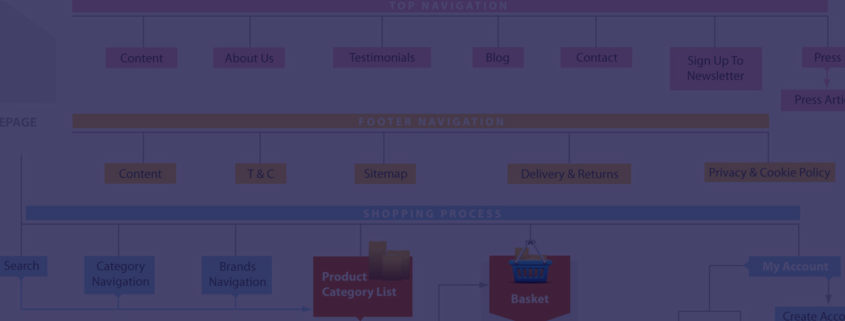












Leave a Reply
Want to join the discussion?Feel free to contribute!